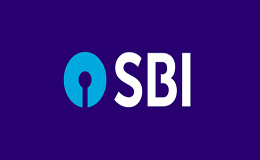Overview
Publications
Recruitment
Intranet
CIFRI Corners'
Dolphins are the ideal ecological indicator species of a healthy aquatic ecosystem. Therefore, protecting dolphins would contribute to the survival of both the species and the people who rely on the aquatic habitat for their way of life. Being the most economically valuable fish, hilsa significantly contributes to riverine fisheries in the lower stretches of the Ganga River. Recent research indicates that overfishing and other anthropogenic activities are seriously threatening the Ganga River's hilsa and dolphin populations.
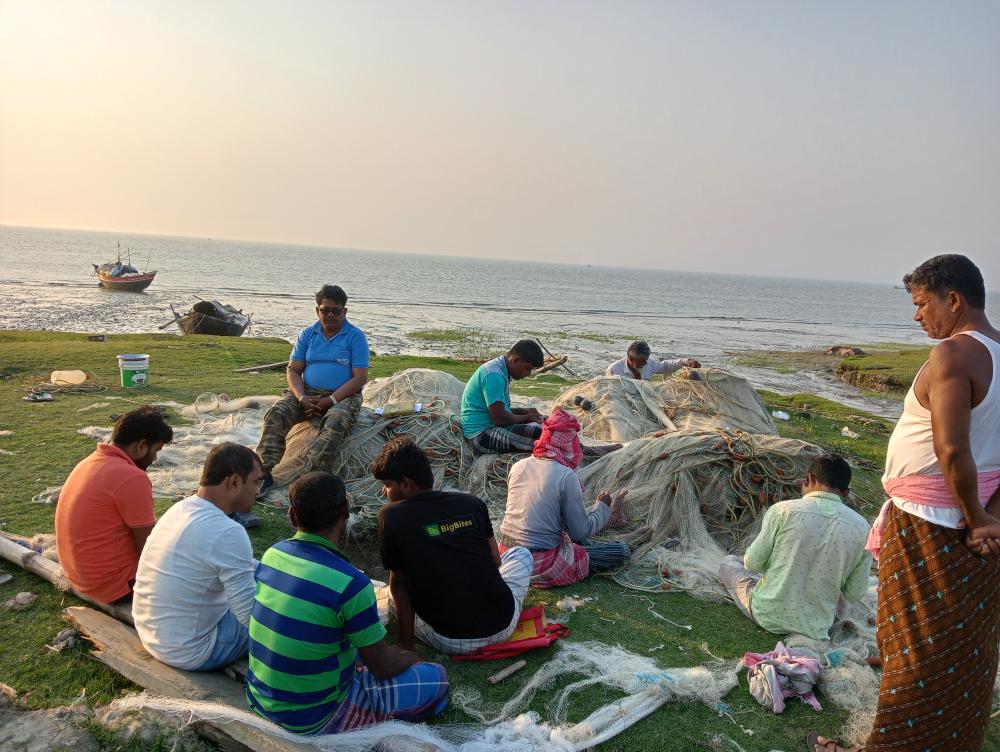
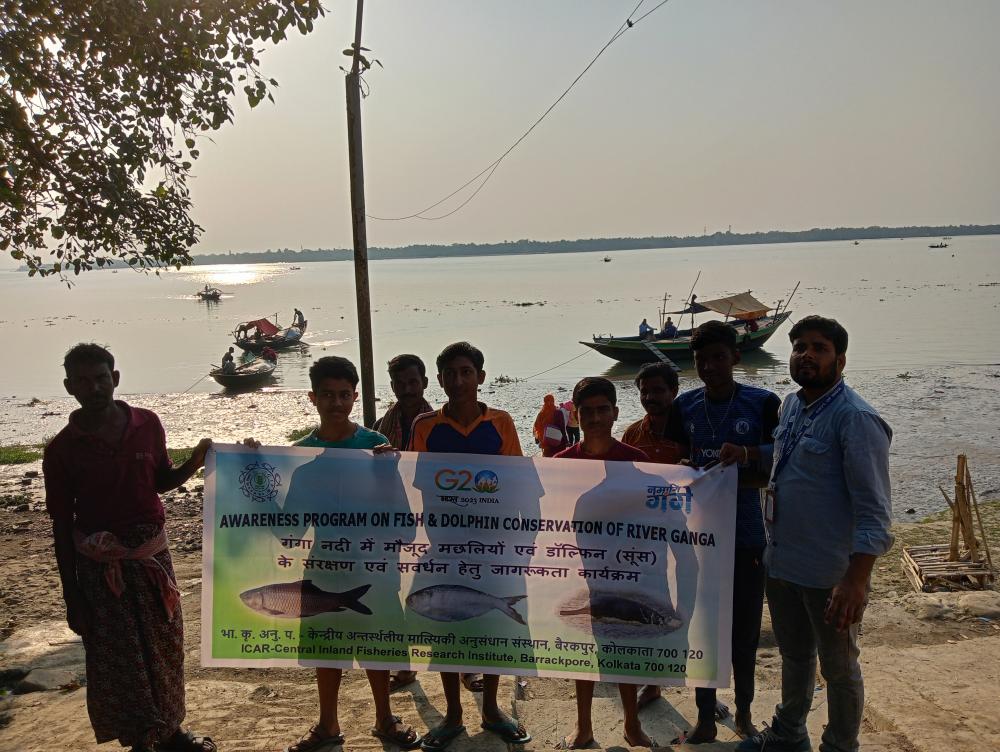
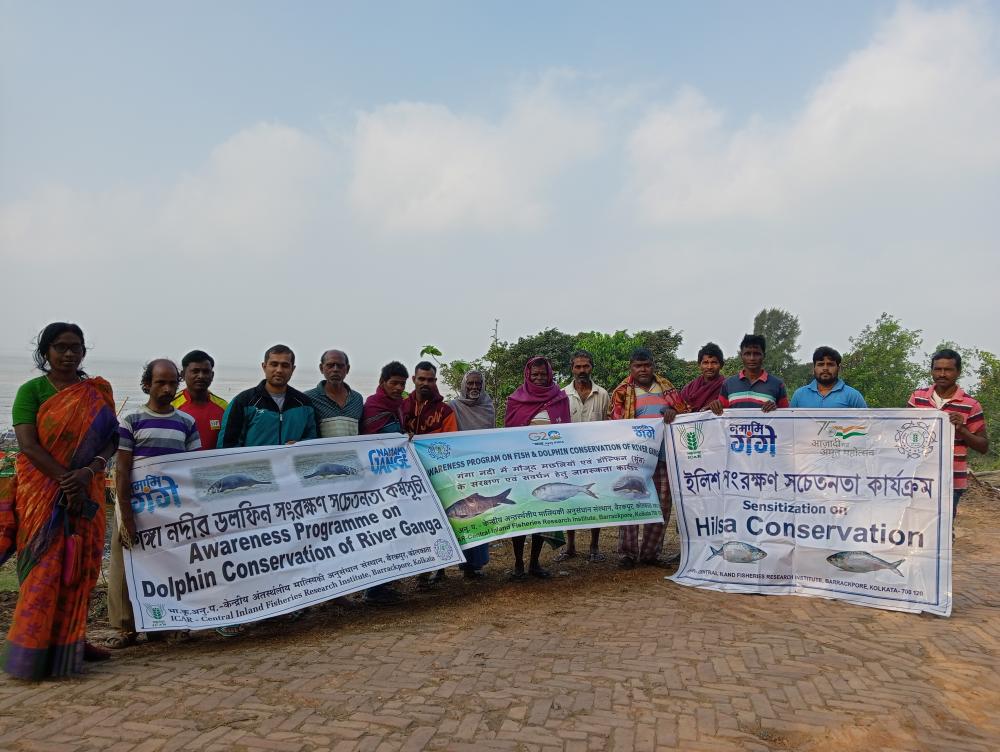
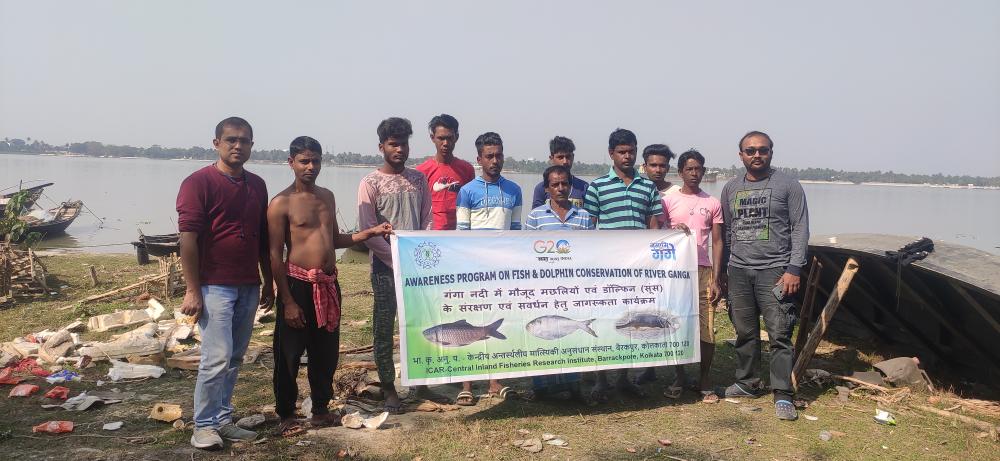
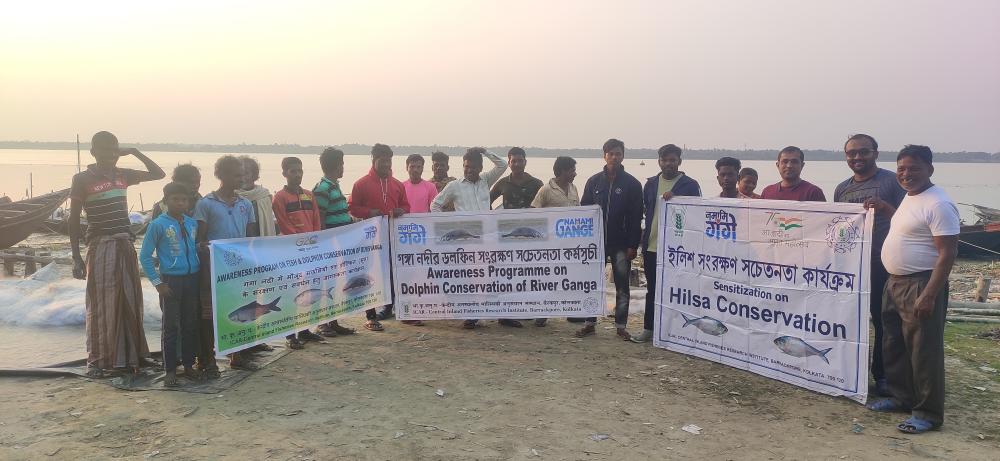
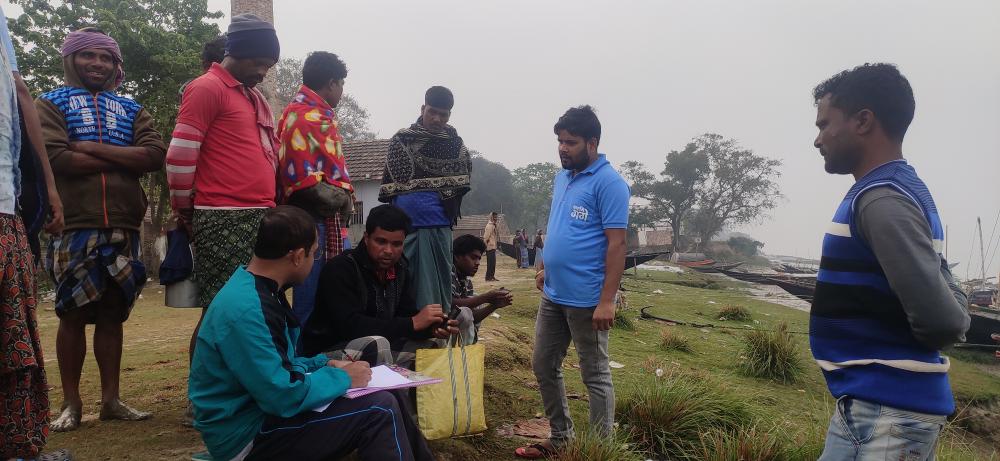
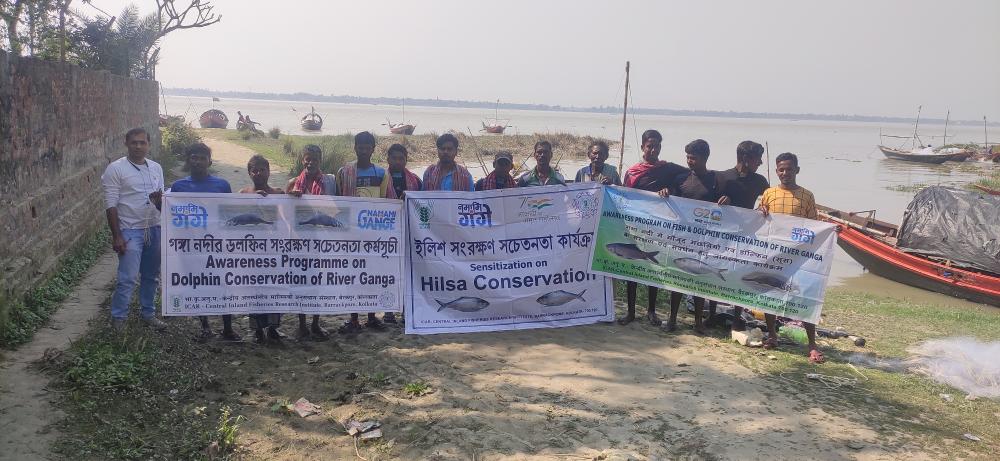 refraining from throwing plastic and other trash into the river, maintaining riverine biodiversity using scientific fishing gears, etc. Additionally, flyers on ‘dolphin and hilsa conservation’ were distributed to the fisheries, and villagers living along the riverbanks in various locations, along with a pictorial poster showing Ganges River fishes. The program was put together with the help of the NMCG team, and officials from the state fisheries department of West Bengal. It was supervised by Dr. B. K. Das, Director, ICAR-CIFRI, Barrackpore, and coordinated by Dr. Dibakar Bhakta, Scientist of the institute.
refraining from throwing plastic and other trash into the river, maintaining riverine biodiversity using scientific fishing gears, etc. Additionally, flyers on ‘dolphin and hilsa conservation’ were distributed to the fisheries, and villagers living along the riverbanks in various locations, along with a pictorial poster showing Ganges River fishes. The program was put together with the help of the NMCG team, and officials from the state fisheries department of West Bengal. It was supervised by Dr. B. K. Das, Director, ICAR-CIFRI, Barrackpore, and coordinated by Dr. Dibakar Bhakta, Scientist of the institute.


